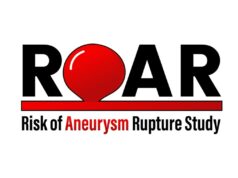 Newly commissioned research, led by Costello Medical on behalf of Hereditary Brain Aneurysm (HBA) Support, has revealed “shocking gaps” in the screening and care people receive for hereditary brain aneurysms, highlighting the need for action to ensure consistent screening guidelines and equitable care.
Newly commissioned research, led by Costello Medical on behalf of Hereditary Brain Aneurysm (HBA) Support, has revealed “shocking gaps” in the screening and care people receive for hereditary brain aneurysms, highlighting the need for action to ensure consistent screening guidelines and equitable care.
Familial or hereditary brain aneurysms—which occur in people with a strong family history of the condition—present further challenges compared to other brain aneurysm types, according to a recent press release from HBA Support. The release notes that it is estimated that roughly three people die per week due to hereditary brain aneurysms, which tend to rupture earlier, are often present in multiple locations within the brain, and typically carry a lower survival rate.
However, the “good news”, HBA Support adds, is that brain aneurysms can mostly be treated successfully if detected prior to rupture—and, with hereditary history as a clue to guide screening, patients can be screened and treated “before tragedy strikes”.
Health research agency Costello Medical led a recent investigation into how the UK healthcare system manages families at risk of brain aneurysms, analysing care guidelines from across the National Health Service (NHS) and also reviewing academic research gathered as part of a previous targeted literature review from HBA Support.
The charity’s recent release states that this research highlights “crucial gaps and inconsistencies” across four different areas of concern:
- Inconsistent screening guidelines for individuals with significant family histories, leaving them unable to access early detection
- Lack of specialist medical knowledge and limited tailored treatment for hereditary brain aneurysms
- Unclear and non-standardised follow-up monitoring and care guidelines
- Lack of specific guidance for the unique risks faced by families with a history of brain aneurysms
“Families with a history of brain aneurysms often face immense challenges to access screening and follow-up care,” said Rebecca Middleton, founder and chair of HBA Support. “Through our research, we have thrown a spotlight on what many families have already told us. These gaps have real-world consequences for patients and their loved ones. It’s clear that we need defined, consistent and equitable screening and care pathways to protect these vulnerable families at risk.”
“Early detection, regular monitoring and appropriate treatment can save lives,” added Diederik Bulters (University Hospital Southampton, Southampton, UK), chief investigator for the ROAR study, and chief medical advisor and trustee of HBA Support. “This research represents a first and important step in building the evidence showing the need for tailored and personalised guidelines. We currently rely on the expertise and experience of individual neurosurgeons and neuro specialists, but we know that—up and down the country—there are inconsistencies in that advice. We hope these results, as well as the results of the ROAR study led by my team at Southampton University, will present further evidence for improved and informed screening and care of all patients with unruptured brain aneurysms, including those with the familial condition.”
HBA Support is now calling for urgent conversations with the NHS, clinicians, and policymakers, to start a national conversation around the creation and implementation of recognised guidelines for hereditary brain aneurysms. Its goal here is to ensure that families affected by the condition receive consistent, timely and tailored care, based on the latest evidence and best practices. The charity is also currently asking for patients to get in touch to take part in research and tell their stories so they can ensure patient needs are addressed.
“We know that there is a long road ahead, and guidelines can take very many years to develop, but we are committed to starting a conversation and throwing a spotlight on the current state of care and disparities today,” Middleton commented. “Until then, we will continue to empower and support our patient community to ask for diagnostic screening, regular monitoring and ongoing screening if they are at risk of the familial disease, and have a proven family history. Every aneurysm caught before rupture is potentially a life saved, and a family’s story changed from devastation to hope.”










